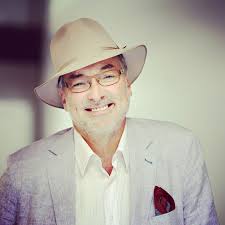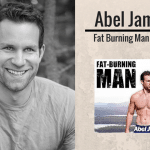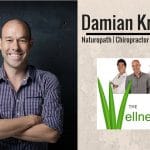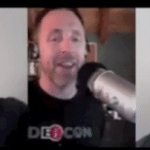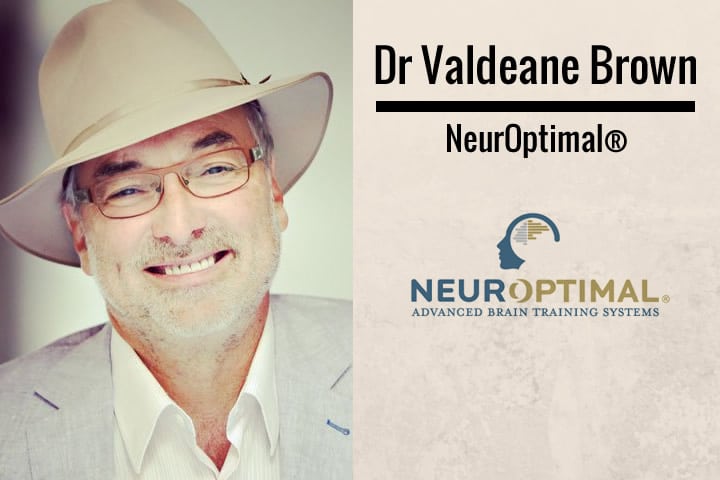
Watch the full interview below or listen to the full episode on your iPhone HERE.
Stu: This week I’m excited to welcome Dr Valdeane Browne PhD. Dr. Brown had a long and varied history in the field of mental health before even pursuing his Ph.D. in Psychology. For over 25 years he taught Continuing Medical Education courses across a wide range of clinical topics including Rapid Transformation of Borderline Phenomenology, Dual Diagnosed Clients, Dynamics of Family Therapy, Working With Angry Adolescents. For many years he was a featured and keynote speaker at numerous national and international conferences in the fields of neurofeedback, child psychology, Total Quality Management, and others.
He developed and published the Five Phase Model of Neurofeedback which was the first and still the only, approach to clinical neurofeedback that integrated multiple protocols into a single comprehensive approach that could be used regardless of clinical presentation. With his background in mathematics, physics, computer programming, designing and implementing automated outcome studies as well as multimodal assessment, he was able to co-develop, with his wife Dr. Sue Brown, the Period Three Approach to neurofeedback.
Their Approach was fundamental to their new and revolutionary neurofeedback system (later to become NeurOptimal®), showcasing their vision of Dynamical Neurofeedback™. Over time this was refined, always with an overarching commitment to safe, effective and effortless personal transformation that anyone can use. Now retired from actively programming, Dr. Brown directs the ongoing architectural development of NeurOptimal® as well as being intimately involved in ongoing Research and Development at Zengar. In this episode we discuss the main principles of neuro feedback, the most common uses for it, and also discover how it can help us regain our sense of focus and clarity, enjoy…
Audio Version

 Questions we ask in this episode:
Questions we ask in this episode:
- What are the main principles of neural feedback?
- What would a typical brain training session look like?
- How safe is the practice of brain training?
Get More of Dr. Valdeane Brown
If you enjoyed this, then we think you’ll enjoy this interview:
- Dr Bruce Lipton – At Last, Scientific Proof of How Our Thoughts Can Make Us Healthy or Sick
- Dr Joe Dispenza: Becoming Supernatural. How Common People Are Doing The Uncommon
- Dawson Church – EFT Explained
Full Transcript
Stu
00:03 Hey this is Stu from 180 Nutrition, and welcome to another episode of the Health Sessions. It’s here that we connect with the world’s best experts in health, wellness, and human performance in an attempt to cut through the confusion around what it actually takes to achieve a long lasting health. Now I’m sure that’s something that we all strive to have. I certainly do. Before we get into the show tody, you might not know that we make products too. That’s right, we’re into whole food nutrition, and have a range of super foods and natural supplements to help support your day.
00:33 If you are curious, want to find out more, just jump over to our website. That is 180nutrition.com.au and take a look. Okay, back to the show. This week I’m excited to welcome Dr. Valdeane Brown. Dr. Brown has a PhD in clinical psychology, and a background in mathematics, physics, computer programming, philosophy, yoga, meditation, and martial arts. He developed NeurOptimal brain training, which is considered by many to be the most highly evolved form of neuro feedback available today. In this episode we discuss the main principles of neuro feedback, the most common uses for it, and also discover how it can help us regain our sense of focus and clarity. Over to Dr. Brown.
01:20 Hi Guys, this is Stu from 180 Nutrition, and I am delighted to welcome Dr. Valdeane Brown, PhD to the podcast. Dr. Brown, how are you?
Dr. Valdeane
01:30 I’m good. How about you Stuart?
Stu
01:31 Yeah, very well thank you. Again, thank you so much for sharing some of your time today. I’m very, very intrigued and keen to dive into some of the questions, but before we do that, I just wondered if you could tell our audience who may not be familiar with you, a little bit about who you are and what you do?
Dr. Valdeane
01:50 Yes. I’m licensed as a psychologist on inactive status in the US, and my wife is too, Dr. Sue Brown. She and I are the co developers of NeurOptimal brain training system, and we’re the co founders of Zengar Institute Incorporated. It’s the easiest to use, safest, and overall most interesting brain training system. Let’s put it that way. Certainly the most advanced, in my opinion, and it really is about giving brain directly information about what it just did, so the brain itself sorts out what is best for it at that moment. It’s not driving it any place in particular.
02:41 About 20 years ago, Sue and I decided that we really needed to create our own neuro feedback program. I was teaching at that time, neuro feedback, across a wide range of systems. Various conferences and things of that nature, and I just had had a very different vision for what neuro feedback could be. I actually had that vision all the way back in 1970, and that’s kind of been my life’s work. Most of that time waiting for technology to catch up to the place where it could implement what I had envisioned. So I’m definitely the visionary, shall we say?
Stu
03:32 Fantastic. Fantastic. So, for all of those out there then that are keen to learn more, don’t know a huge amount about this, so neural feedback, so what is it? What are the principles of it?
Dr. Valdeane
03:48 Right. Generally, I would talk about it as neuro feedback, but that’s a terminology difference. The basic principles are the understanding that the brain’s central nervous system is one of, if not the most complex non linear dynamical systems around. It’s the best metaphor for it really is the entire worldwide web taken as one entity.
Stu
04:20 Right.
Dr. Valdeane
04:20 Conservative estimate was that the current intelligence level and capability level of the entire worldwide web as a self organizing system, is at about the level of a human three year old. So yeah. So you can see, if you understand that way, it makes much more sense to think of the brain as a globally interacting, and highly integrated system instead of a collection of little bits that do different things.
Stu
04:53 Right.
Dr. Valdeane
04:54 The truth is, the most important thing that the brain does is to work in this integrated way, or else you couldn’t walk. That’s not just a separate center that handles walking, and it talks to another part of the brain that does other things. It’s the brain working all of the parts together smoothly, that makes it different. If that weren’t the case, you could actually teach a child to walk, but you can’t. You have to help it explore its world, in its growing capabilities. That’s really the fundamental process of neuro feedback as we do it. We give the brain that information.
05:33 Other approaches though, believe they understand how to induce a certain state in a given brain, and they try to train someone to that. The problem with that is it takes an awful lot of experience, and awful lot of knowledge, and very precise skills developed over time. It’s much easier to get it wrong, because the brain is always adapting to what it’s doing or what it’s given.
Stu
06:03 Yes.
Dr. Valdeane
06:03 So our approach is fundamentally different. We just feed back to the brain, exactly what it just did, and it figures out what to do, just like the child learning to walk.
Stu
06:16 Got it. Got it. Well I’m particularly interested in talking about this today, and I think, first off the bat, we’re told that the brain, like you just mentioned, is hugely complex, and capable of so much.
Dr. Valdeane
06:30 Yes.
Stu
06:31 Yes often times, personally it doesn’t feel like that because, you know, I can’t even do two things at once.
Dr. Valdeane
06:39 Right.
Stu
06:39 Where’s my keys? Oh my God, you know. If my brain was a computer, I would trade that thing in. I want a faster one, and a better one.
Dr. Valdeane
06:49 You’d want an upgrade, or you’d want a different [inaudible 00:06:51].
Stu
06:51 Totally. Totally.
Dr. Valdeane
06:52 Yeah, yeah. I understand, and it is interesting because what I find frequently a way to describe what happens for a lot of people, is that they get kind of rut stuck, and usually that’s ensconced in some statements of personal identity. I’m thinking of someone I knew for a long time who used to say, “It always rains on my vacation.”
Stu
07:23 Right.
Dr. Valdeane
07:25 And I remember, I just looked at her at one point, and I said, “How do you think that gets done? I mean is there some guy up in the great celestial bureaucracy, and he goes, ‘Oh she’s on vacation. Cue the rain now.'” It’s an interesting belief, and that really colored her experience on vacations.
Stu
07:47 Yeah, it’s fascinating when you look at it like that.
Dr. Valdeane
07:49 Which is really fascinating. Instead of what’s right in front of you, right? It’s kind of like those times where you think, “Oh I can’t do that.” Really, when you say that what you’re saying is I can not do it.
Stu
08:05 Yes, yeah.
Dr. Valdeane
08:06 Right? So I can not stand, and a really good way to do that is to sit down.
Stu
08:12 Yeah. True.
Dr. Valdeane
08:13 That’s different than saying, “My legs no longer support me, and I’m fine to work through my rehab because I had this accident.” Those are two totally different environments, and frequently we have so many of these kind of things we learned early on in life that worked at the time, or you wouldn’t be here. It’s really that simple, and so it’s kind of like, “Well, I go with what used to work for me because at least it worked once, or twice, or a few times.”
Stu
08:46 Yeah. That’s it. There’s a glimmer of hope there that it may work again.
Dr. Valdeane
08:51 Yes. Yes. Exactly.
Stu
08:55 So, NeurOptimal then. So the company and systems that you’ve created, I had a look at it on the website. It said it can help you regain your sense of focus and clarity. So how does that work?
Dr. Valdeane
09:11 My experience over time is that what happens is that folks tend to let themselves lose sight of what’s important to them.
Stu
09:22 Yeah.
Dr. Valdeane
09:24 It’s kind of getting lost in the weeds, so to speak. Instead of realizing that the real intent is to be present to my life, because then I can respond most effectively whatever happens, it’s, “Oh I’ve got to do this. Oh I have to do that. I have to do.” No, get that, let that stuff go, because you don’t have to do anything.
Stu
09:50 Right.
Dr. Valdeane
09:51 Now I’ll have folks say, “Well wait a minute, I have to breathe.” I go, “No, you don’t have to do anything unless you’re clear about your want.”
Stu
09:59 Right, yeah.
Dr. Valdeane
10:01 If you want to live, well yeah, then you have to breathe. I agree. Right? On the other hand though, there may come a time where, for whatever reason, you decide you make a different choice.
Stu
10:14 Yeah, true.
Dr. Valdeane
10:15 Right? So everything is a solution in the right context, and a problem, something we don’t want, in other context. The focus and the clarity is about being able to staying oriented to well what do I want as opposed to what I don’t want. It’s like going to the restaurant and the waiter says, “Well what do you want?” Well what I don’t want is a BLT. Okay, well what do you want? “Well what I don’t want is.” At some point you have to say what you do want.
Stu
10:49 Got it.
Dr. Valdeane
10:51 Sometimes folks get in those relationships where one of them says, “Well, if I have to ask, then it’s really not worth it.” Try that at the restaurant.
Stu
11:04 Right. Yeah. See how that works for you.
Dr. Valdeane
11:06 I’m telling you, it’s not good enough, right? So the focus and clarity is well what do I want, and that sounds selfish, but it isn’t. It’s what really lights the fire in my heart? What really brings the song of joy out of my heart. That’s what’s always there to look for.
Stu
11:30 Well …
Dr. Valdeane
11:31 If what you’re doing isn’t supporting that, consider letting it go, or doing something different.
Stu
11:37 Yeah. I completely agree. Focus and purpose would have to be the biggest driver, because without that then you’re just ambling along in life, making decisions that don’t really serve your purpose whatsoever and could lead you in the wrong direction. Totally.
Dr. Valdeane
11:56 Yeah, and so NeurOptimal functions kind of like those rumble strips on the highway.
Stu
12:03 Yup.
Dr. Valdeane
12:03 If you get over to the edge of the road, you start to feel that sensation. Now that doesn’t mean you’re being bad if what you’re wanting to do is pull off to the side to rest for a bit, well that’s good information. Just keep doing what you’re doing. If on the other hand what you want to do is keep driving down the road, that’s good information to turn the wheel a little bit and come back. So it’s the clarity that comes from that information that allows, and if this is happening at a non conscious level, the conscious brain is the slowest part of everything. The research very clearly shows that you’ve already made the choice a second before you realize you’ve made the choice.
Stu
12:52 Right.
Dr. Valdeane
12:53 That’s just the way it works, right? So the rumble strips, so to speak, are little interrupts in the sound of NeurOptimal, and that’s enough for the unconscious aspects of the brain to go, “Oh, do I really want to be doing this? I’m starting to feeling, no I don’t really want to feel like that right now.” Now all that’s just words explaining the process that happens just like the body learns how to walk and balance. There’s no words to it, but it’s, if you watch your young child learning to walk you see the wobbles that then start to get smaller over time.
Stu
13:32 Yes, yeah.
Dr. Valdeane
13:34 That’s the clarity and the focus right there. I want to go over there. I don’t need the wobble.
Stu
13:40 So, would that be a common thing then, as to why people would come and inquire about your system and services? Is that where you’d start?
Dr. Valdeane
13:53 Well it’s very interesting. NeurOptimal it has been determined by the US FDA, the Food and Drug Administration, to be a general wellness product. Not to be a medical device.
Stu
14:08 Right.
Dr. Valdeane
14:09 So it’s actually not used to treat anything. It instead facilitates general wellness, a return to general wellness. Like many things do.
Stu
14:21 Yeah, yup.
Dr. Valdeane
14:24 Part of what that means is that folks will show up and they’ll say, “Well you know my neighbor, George, told me he came here, and now X, Y, and Z is happening more smoothly in his life. Do you think that could happen for me?”
Stu
14:39 Right.
Dr. Valdeane
14:39 Well we don’t know because everybody is unique. The information is for you at this moment. It’s not, “Oh, well you want to lose five pounds. Well come here. We have a program for you.” There are other things that do that. That’s a much more of a treatment kind of orientation with a very specific outcome in mind. So what’s really happened over this whole time period that we’ve been developing, and supporting this around the world, is it’s a lot of word of mouth and gorilla marketing.
Stu
15:15 Yes.
Dr. Valdeane
15:15 Where people say, “I’ve just heard about it from so many of my friends and associates that, you know, I just have to do it.” Some people come because they think it will help with them with their creative endeavors, whatever those are. Painting, writing, whatever. We have Olympic level athletes who use it for their own purposes. We have just the entire range because we’re not a medical treatment. We’re not saying, “Well, in 10 sessions X, Y, or Z will happen for you.” We just don’t know, and you’ll know as you do the training, you’ll know yourself just like you’ll understand how well you walk based on what you learned growing up, and what’s going on in your life.
Stu
16:03 Yeah, that makes sense. Do people use it for sleep?
Dr. Valdeane
16:09 Well it’s very interesting about sleep because sleep is one of those things that a lot of people look like and say, “You know it’s kind of like eight hours, or whatever, wasted.” No, actually. You’re designed just that way. What I say is instead of thinking about a specific amount of time, one of the things that’s very important is to have a consistent time to wake up.
Stu
16:39 Right.
Dr. Valdeane
16:39 Correlative to that over time, a consistent time to go to sleep. Then feeling rested, I should say, when you wake up so you’re kind of ready to go. Not needing five espressos to even make it down the stairs, and what a lot of our trainers, people using the system, and also those who use it personally will say is something like, “Well, I just find it easier to make the choices that I want to make in life. The good choices.” I still had drink a beer every now and again, but it doesn’t have to be three, or four. One’s enough.
Stu
17:29 Yeah, fascinating.
Dr. Valdeane
17:29 Or, ” Yeah, I find I walk up and down the stairs now instead of taking the elevator.”
Stu
17:35 Right. Interesting.
Dr. Valdeane
17:37 Yeah.
Stu
17:38 Well, so let’s talk about a typical brain training session in terms of the tech used, and also the structure of the session as well. Now, I’m sure there are many people out there at the moment who are thinking along the lines, like myself, of this huge industrial kind of kitchen colander
18:00 That you put on your head, with wires firing everywhere and lightning and sparks, I’m sure that isn’t the case. Is it?
Dr. Valdeane
18:10 Yeah. You saw that movie too, right?
Stu
18:12 I did.
Dr. Valdeane
18:15 Interestingly enough, we use a very small number of sensors. Two on the scalp, more or less, here. And then an ear clip on each ear and one more ear clip, which is essentially a ground for the system, on the same ear, on the right ear. That’s it. And what happens, really, is for most people you can sit up, you can lay down. A lot of folks use like a recliner kind of thing, where it shows long. And you can have your eyes open or you can have your eyes closed or you can move in and out of that during each session. But essentially you’re listening to music and in the music, every now and again, there’s small interrupts. And some people describe them, although this reference may not fit some of your audience, as what it sounded like when you heard scratches.
Stu
19:23 Ah. Okay.
Dr. Valdeane
19:23 On vinyl records?
Stu
19:24 Oh, right. Yes. I know.
Dr. Valdeane
19:26 Right?
Stu
19:28 Yeah.
Dr. Valdeane
19:28 Some are going, “Scratches. Did you scratch the-”
Stu
19:32 Some people are saying, “What’s a record?”
Dr. Valdeane
19:34 What’s a record? Yes. Exactly. And so it’s … that’s just enough, like the rumble strip, that’s just enough to give the information to the central nervous system to your brain, “Is this what you want to be doing?” It’s not saying, “Don’t do it.” It’s not saying, “Do more of it.” It’s saying, “This is what you just did.” And the brain is getting that information vastly more fast, vastly quicker than any other way of getting it. You know, you go to school, particularly a university, and you may have a midterm and a final. Well, by the time you get to the midterm, if you’re really out of it, that’s too late. You need the feedback much more precisely and sooner and geared to you, not just “C” or whatever on the midterm. So we’re doing that moment-to-moment feedback within the session.
20:38 So you can use any music you want. We have a default set of music that was produced for us by a good friend, Jeff Bova, who’s a multiple platinum Grammy award-winning musician, who did, whole thing. And the music that we use now in the latest version of the software, I had the great privilege and joy to work directly with Jeff on parts of it. And that’s something he and I had talked about many years ago doing, so I’m especially fond of it.
21:15 But you can use any music, you can watch movies, we have set up ways to do that. So really it’s just a pleasant thing. Children, very young children, particularly like to watch one of their favorite movies or something like that. And, of course, the interrupts then are in the soundtrack of that movie, but also very slight perturbations in the video. And if you have your eyes open, and you’re using our default music, there’s a random fractal program that runs on the screen, you can watch it, and it has subtle changes that reflect the activity in the interrupts as well. But the whole point is to not be able to figure it out consciously.
Stu
22:03 Well that’s fascinating. So coming in, and I’m preparing myself and I’m wired and plugged in, and I go through what sounds like a really pleasant experience of listening to music or watching a movie, and at the end of that session, I’m more, I guess, grounded and focused? I have the potential to have more clarity in the outcome?
Dr. Valdeane
22:26 Well, that’s certainly what a lot of people report. Everybody has their own experience ’cause we’re all unique. Even though as Harry Stack Sullivan said, “We’re all more simply human than otherwise,” which I think is always a good thing to remember. But a lot of people will come out of a session at the end and going, “Okay. Now I’m refreshed. Now I’m ready to go.”
22:54 Some folks who are in a situation of not getting restful, rejuvenative sleep, sufficiently, they may find that they just go to sleep because the body and the brain will do what it needs to do when it’s allowed to. And so if you’re just letting go and allowing yourself to follow along and not trying to do something, if you need sleep, you’ll doze. And that’s fine because the unconscious mind is still working while you’re sleeping.
Stu
23:29 How long would a typical session last?
Dr. Valdeane
23:32 We have sort of two flavors of sessions, if you will. The regular is 33 minutes. And then what we call the extended is 45 minutes. The extended is sort of a legacy from earlier versions of the program. And a number of our longtime trainers, folks who have had the system for a long time, say, “Oh, I just love to do that that that long. I know it isn’t better, I know it isn’t stronger. But, ah, I just love it.” You know. So, okay, there we go. Go longer, that’s fine.
Stu
24:11 How often would I do this? Could I do it every day or is it multiple times a day if I was really hooked?
Dr. Valdeane
24:17 You could do it every day. What will happen is that your brain is very good at receiving the information it needs. And when it’s done, it’s done. So, some people say, “But what if I do two or three times a day?” And I’m reminded of that old Zen story of the guy who shows up at the monastery, and he goes, “Okay, I’ll meditate all day long, I’ll work really hard. Every single day I’ll just do it. How long will it take?” And the [inaudible 00:24:53] goes, “”Ten years.” And he goes, “Okay. Okay. Well I won’t sleep. I’ll work twice … How long will it take?”
25:01 “Twenty years.”
25:02 The more you try the worse it gets. Right? So folks make that kind of assumption that, okay, if one session a day is good, two a day must be better. Or if one session a week is good, then three a week must be better. Everybody finds their own rhythm and that can change over time too. A lot of our trainers have found in their environment, in their city, culture whatever, that maybe once a week is good for awhile. Or maybe … It totally depends and you will find your own rhythm with it.
25:42 We have a personal training system that is available to individuals, families,’cause no experienced person is really needed to be involved. It’s very simple to learn how to use and we have great videos and a great user community that will support you. And then you can train it as often as you really like. That’s up to you.
Stu
26:09 Fantastic. In terms of safety, the practice or rewiring the brain. Now, I’m not gonna get into this and then start involuntarily wetting myself, am I?
Dr. Valdeane
26:29 No. I tend to dislike talking about the wiring because it really … For a number of years, and for many reasons that relate to the early history that I had, all the way back in 1970 and shortly after, I had the great fortune to be able to co-present with Karl Pribham for a number of years. He’s the person who developed and articulated Holonomic Model of the Brain, and our training system is based on that. It’s one of the reasons he and I co-presented for so many years.
27:08 And part of what was so fun for me, among many other things, of presenting with Karl, just even being with him, but especially presenting with him, was his orientation was he always, as he put it, “I wanna know the go of it. The go of it. Like what’s happening in the stuff.”
27:28 And I used to always say, ” Karl, that’s great ’cause you can run with that. I’m glad you’re doing that because I’m on the opposite side. I’m kind of like a computer programmer, going, “I don’t want to care what hardware’s in there. I don’t want care if it’s a Mac or Windows or it’s whatever. I wanna work up here and get them all to do the same thing.”
Stu
27:52 Got it.
Dr. Valdeane
27:53 So for me it’s like, “You know, I don’t need to know that. Knowing that doesn’t improve it.” And that’s really the point for me is. What’s the most effective and efficient way to give information that the brain can use to make its own choices about life? And because they’re entirely self-organizing systems, brains tend to make really good choices when they get really good information.
Stu
28:25 It does sound like everybody would benefit from utilizing this type of system. Would that be correct?
Dr. Valdeane
28:37 One of our longterm, very experienced trainers, users, says, “Well, every brain deserves this.”
Stu
28:48 True.
Dr. Valdeane
28:50 I used to joke a lot about, as I see the vision, I sort of gloss on Apple and I say what Sue and I have come up with is neuro feedback for the rest of us. So, it’s just like Google. You don’t really have to teach people how to use Google. It can get access to almost any information. It’s pretty amazing. We want to make, and I think we have, made neuro-optimal that simple, that elegant. And yet that useful also.
Stu
29:34 Is this something that you would see in the future that we would be able to do on our phones?
Dr. Valdeane
29:43 There’s no technological reason that that couldn’t happen. I had a vision in 1970 and I knew the mathematics that would be involved and as I started thinking about that, I projected out well when would there be computing systems widely available for most people that could support that. And it’s like, okay, we’re a couple of decades away. So I put it up on the shelf. Well, in the very beginning, I used to say to folks, “Take your cellphone out of your pocket.” I said, “You’re holding in your hand right now more computing power than existed on the entire planet when Neil Armstrong and Buzz Aldrin landed on the moon.”
Stu
30:37 Boy, it’s just crazy, isn’t it to think that. But it’s absolutely true.
Dr. Valdeane
30:44 And now think about what smart phones are even compared to that first gen, or second generation. Right? That’s that whole vision that Microsoft and other companies, but I’m thinking Microsoft right now has, the device is irrelevant. It’s the inter-operability that counts. It’s the interconnection. So when will there be sufficient computing and other capabilities available on your phone? I don’t know. That’s out of my hands. I kind of have to respond to what the technology allows, and so at the moment, for the foreseeable future, we’re sort of in the Windows environment. And we distribute only on Windows systems that we configure and install for you, et cetera.
31:36 There’s pluses and minuses to that. Would I love to have it just be on a smart phone and whatever else we need up here to get the signal? Of course. Unfortunately, or fortunately, the way I process, the way our program processes the information is much more like what the U.S. military uses for look-down, shoot-down radar systems. And what commercial aviation uses in Doppler Radar imaging to capture wind sheer patterns to make navigation safer around airports. It’s very, very complex mathematics. It’s actually the mathematics of quantum mechanics and part of what went into the Manhattan Project and the development of fission and fusion and that sort of thing.
32:32 Those mathematics can be tuned for all kinds of purposes. They’re what a lot of financial analysis uses these days. It’s very sophisticated analysees that do interesting things when not appropriate oversight is provided. It fits the institutions. Anyway.
Stu
32:54 I’m so intrigued by the conversation that we’ve had in terms of it seems like this process will make me a better version of myself. So if I wanted then to decide to give it a go, how would I go about it? What would I do?
Dr. Valdeane
33:13 Well, we have trainers all over the world. We have trainers actually in Australia. You would go to our website, www.neuroptimal.com, and it’s N-E-U- R-O-P-T-I-M-A-L, neuroptimal.com and there is a feature on our website that says find a trainer. So you go there and it’s sort of like using a Google maps or some similar device where you would put in your location and boom, you’d get a list of folks who are as close as possible to you.
33:56 Now, we have a number of folks in Australia, for instance, and a number of them supply rental systems, or loaner systems. Right? So you would contact them. Maybe the nearest person to you is down in New South Wales but you’re way up the Gold Coast or whatever. So, you would contact them and work things out because Australia is an amazing place. I had a wonderful, almost two-week experience at Noosa a number of years ago.
Stu
34:33 Great spot.
Dr. Valdeane
34:34 It was winter for you guys, but I didn’t care. It was fine.
Stu
34:37 Yeah. It’s a pretty mild winter in Noosa.
Dr. Valdeane
34:41 Exactly. And I understand the distances. I understand the logistics of it. And we try to facilitate that. But it’s the same worldwide. Use the find a trainer page and go from there. And all of our folks, we really do see our end users, our trainers, our users, their clients, it really is a family. Just like our business is a family. It was never intended to be a family business. In fact, Sue and I frequently look at each other and go, “Like, there’s this business that’s supporting all these people. How did this happen?” And it is family. Her two children are main players in the company. And my youngest daughter is a real important technical person in the company. And most everybody knows everybody, but we try to keep that whole community, family orientation, so to be as helpful as possible. And that should show up as soon as you make a contact with
36:00 … someone from the Find a Trainer.
Stu
36:01 Fantastic.
Dr. Valdeane
36:02 You can also contact info@neuroptimal, just send an email. That’s fine and there’s an 800 number and some other contact information, as well. Any of those ways can get the process started for you.
Stu
36:15 Fantastic. We’ll put that info in the show notes for anybody that wants to know more. I’m super keen myself.
Dr
Valdeane: 36:23 Good.
Stu
36:23 So yourself, personally, how do you use the system? Tell me, what does the creator do? What does the architect do?
Dr. Valdeane
36:37 Well, it’s funny. If you talk to my wife she’d say, “Oh, he doesn’t use it enough.” It’s funny, it’s kind of like that scene in the Dogma movie where the Matt Damon character goes, “All I’m saying is one of us could use a nap.” A lot of our trainers will say, ” Well, I just know when it’s time because it’s just the law.”
37:06 Right now most of the work that I do for the company as a whole … beyond being outward facing like this which I just love doing, these kind of podcasts and presentations and stuff … but I’m still the chief software architect and chief technical person. I no longer do the direct programming. At one time I basically did all of it, but I have a development team who does the code, but I’m always looking and the final authority on pulling the pieces together to make sure they’re working right, choosing the technology that we platform on and, as a piece of that, I’m almost always running sessions as myself just to keep things tuned and to make sure that the different systems that I have, because I have a whole array of them, are working correctly.
38:05 But it is interesting because the way I think about it is so much of my daily living is from the place that supports the training but also emerges from the training. I really see it as, from one perspective although it can be described in many ways, as applied Buddhist practice. It’s also a literal incarnation of the opening sentence of the Yoga Sūtra Patañjali, [foreign language 00:38:52]. Yoga, reunification. [foreign language 00:38:54], is the release of. [foreign language 00:38:57], consciousness. [foreign language 00:39:00], disturbances. By releasing the disturbances of consciousness, and that’s really what the Interrupts do. They say, “Okay, you’re going off the highway, is that what you want to do?”
Stu
39:18 Do you think, given what you’ve just said about the release of consciousness, that in this day and age, then perhaps we need to tap into that type of process that you’re offering now more than ever given the fact … and I’m holding up my smart phone for everybody that’s listening to this … These things do the complete opposite in as much as they suck you in, they create an anxious state and almost reprogram your habits and just pull us into this crazy world where it seems everybody now … we’ve never been less present because we’re sucked into this digital space. Do we need to step away from that more than we ever have?
Dr. Valdeane
40:11 I think technology changes everything and those changes can be wonderful. Those changes can be terrible. You look at the carnage that happened on an industrial scale during the First World War and the Second World War. That was technology driven in large part and so was the resolution of, certainly, the Second World War. It was the technology. Technology can bring us together in ways that were never possible. Here we are doing this podcast and we’re on a different day even, I think. Australian time zones in my mind just don’t work. I know it’s different. But that’s amazing and this would not be possible without that kind of technology.
41:08 On the other hand, just like antibiotics have been wonderful but they’ve been overused and that means there’s going to be a counter response from the world of [inaudible 00:41:22] organisms that aren’t meant to be controlled by it. We stand on the verge of being overtaken by those technologies in ways that constrain us and separate us. That’s the real test, I think, of something like a NeurOptimal or those kinds of products or services or events. Do they really bring us together in recognition that, at the core, we’re all compassion? That’s the core of everything. And we’re all more simply human than otherwise. So feeling that and acting on that needs to be, in my opinion, an emergent part, a central part of the kind of thing that we do at NeurOptimal.
Stu
42:21 Got it. Got it. Just back on the smart phones for a second, your thoughts on binaural beats because that is something that you can plug into if you want to. Is there any validity behind the claims?
Dr. Valdeane
42:42 The problem with something like binaural beats … and there are better versions and lesser versions as is true of everything. The challenge with binaural beats is it’s someone else deciding what they believe is good for you. And while it may be good for somebody, for a lot of somebodies, for a large proportion, that doesn’t mean it’s right for you. We get so seduced by normative statistics and average. I remember this study that happened, this is probably about 20 years ago now, in the U.S. where some insurance conglomerate did a survey, whatever, and they said, “The average family in the U.S. has 2.3 children.” No, there’s no such thing as a .3 child. What did that really mean? It meant that a lot of families have two, some more but not quite as many have three and then fewer have four, five and on. That stuff is really useful if you’re trying to figure out, okay, do we need to build a new elementary school? And if so, what kind of capacity? But to deal with an individual, it’s exactly the wrong thing.
Stu
44:02 I see.
Dr. Valdeane
44:03 You’re in a committed relationship, do you ever go up to your partner and go, “Okay, give me an average kiss.” No, of course not. It’s a good thought, binaural beats, there’s a good intention, as there are in many things. The problem is it’s not fitting to you. There is no feedback. It’s a rollercoaster ride and that can be fine, or not.
Stu
44:35 Got it. Understand. Excellent. Boy oh boy. I’m so intrigued now to what to learn so much more about this because it makes a lot of sense, what you’ve said, so I will pursue this and look forward to sharing it with our audience, as well. We’re just about coming up on time but there’s a question that I ask everybody at the end of the show. Given your extensive knowledge in everything that you’ve learned over the decades, what top three tips … and I don’t like to use the word tips, but I will … do you think will make the biggest impact on our overall health? It doesn’t necessarily have to be focused on what you’re doing right now.
Dr. Valdeane
45:26 You know, I’m a great believer in keeping things simple. It may not seem that way given all that I [crosstalk 00:45:37] in this program, our NeurOptimal program, but one is to really make sure to have restful sleep for whatever that means for you. It’s so easy to lose sight of that because, “Oh well, I want to stay up late and watch this show,” or, “Oh, I’ve got to get up early and I’ve got to …” No. Get restful sleep.
46:03 Another thing is some form of general to moderate exercise and that can just be walking. Not a big thing. If you walk with openness to what’s around you, really take it in. You can think of that as mindfulness practice. You could think of that as just letting go for awhile. We really are meant to be walking the planet, not concrete so much. So, actually just even walking in wonderful places.
46:43 I think the other thing is take care of the connections around you. Tomorrow is not promised to anybody so every time you say goodbye, that may be the last time, so really connect, really make it important, make it central, be present.
Stu
47:10 Absolutely. No, that is great advice and I think any of these things, as well, will set you off on the wrong track if not addressed appropriately in terms of if you don’t sleep well, you feel like exercising and if you feel lethargic you probably don’t feel that social anyway so there’s definitely a connection between the three.
Dr. Valdeane
47:30 That’s true. Yes, exactly.
Stu
47:35 Fantastic. Well look, what’s next? What’s on the radar? What have you got coming up?
Dr. Valdeane
47:42 That’s really a good question because the guys at the golf club used to say, “Well, are you retired?” I would say, “Well, today I’m tired, tomorrow I’ll be re-tired.”
Stu
47:57 Right.
Dr. Valdeane
47:58 But I actually am in the process of stepping back from a lot of the day to day and that sort of thing and that really does open up, “Okay, what’s next?” I think a part of it that’s just growing very naturally out of that is probably some more writing in various formats. I’m always looking for the vision in the future of NeurOptimal and the technology that supports it and I don’t think that will ever go away. But the other thing is I’ve only been playing for 10 years but golf is very important to me because it becomes my way of walking through the world and enjoying and being present. You know you got to be present to play. You got to play to win but you’ve got to be present to play-
Stu
48:53 Absolutely right.
Dr. Valdeane
48:55 … and golf is the absolute best feedback system on the planet. Whatever the ball did was because of what you did. That’s it.
Stu
49:04 Boy oh boy, you know what, I always struggle with golf so much because invariably there will be somebody there that gives you advice, and the moment you try and concentrate on the advice that’s given … straighten the arms, bend your knees, look this way, look that way … it’s just the worst hit that I’ve ever made in my life. There’s so many different nuances to getting that technique just right [crosstalk 00:49:30].
Dr. Valdeane
49:31 And really it’s just natural flow for you. There are no two swings that are exactly the same. I used to love that ad that Arnold Palmer did, and he was just so important in golf for the time that he was alive and just a wonderful man and presence in the world. The ad was … it showed various different people swinging a golf club and he said, “Swing your swing.”
Stu
50:00 Right, oh well, there you go. Easy. That says it all.
Dr. Valdeane
50:04 Yeah.
Stu
50:06 So Dr. Brown, thank you so much for your time today. You definitely planted a seed in my mind. I’m so intrigued to find out more-
Dr. Valdeane
50:15 Oh, good.
Stu
50:16 Yeah, absolutely. Self-optimization, I want to be the best I can be and share this with everybody else so I am going to follow this a little bit more. I’m intrigued to learn much more. For everybody that’s listening to this that wants to do the same, so the best place to go would be neuroptimal.com?
Dr. Valdeane
50:39 Yes, yes, www.neuroptimal.com. And then the Find a Trainer item if you’re looking for that. There’s also a lot of interesting things that you can read there, further information about NeurOptimal, what it does, that sort of thing. A lot of good stuff there.
Stu
50:59 Fantastic. Well look, we’ll populate the show notes with all of the links that we’ve spoken about today.
Dr. Valdeane
51:06 Great.
Stu
51:06 Again, thank you so much for your time. Much appreciated and hopefully-
Dr. Valdeane
51:10 Thank you.
Stu
51:11 … we’ll connect with you at some stage in the future.
Dr. Valdeane
51:14 That’d be great.
Stu
51:14 All right.
Dr. Valdeane
51:15 I’d love it.
Stu
51:15 Okay. Thanks again, we’ll speak soon.
Dr. Valdeane
51:17 Thank you, yes.


